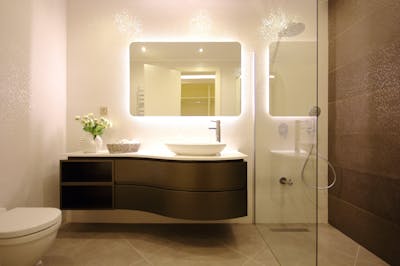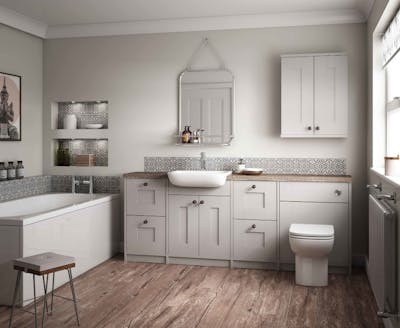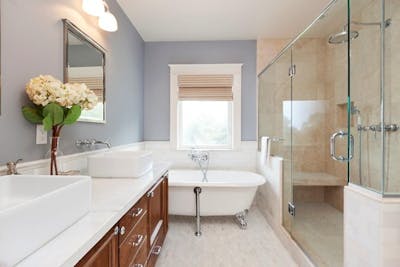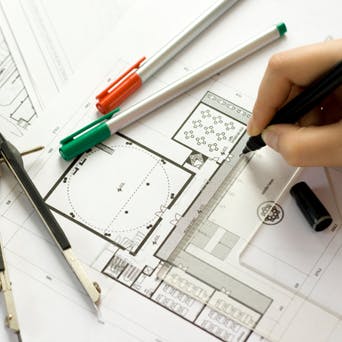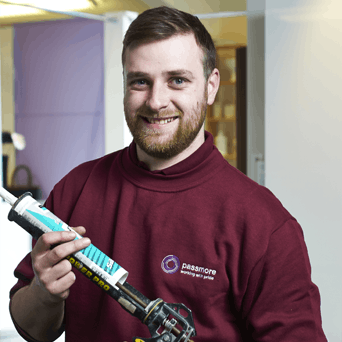How to stop bathroom condensation | More Bathrooms
Published: 30 September 2021 · Last Updated: 6 December 2023
The occurrence of condensation in our bathroom can cause a real bother. Not only is unpleasant to the eye, but it can also potentially cause health problems if it is not dealt with.
However, we shouldn’t worry as it can be easily dealt with, there are a host of solutions that are out there that can prevent and remove condensation in the bathroom.
What is condensation?
Bathroom condensation, in simple terms, is when hot water vapour turns to liquid when it meets a cold surface, usually the walls, mirrors, or the floor.
Typically, you may notice little droplets of water on the surfaces we’ve just mentioned, that is how you’ll know that the moisture in the steam has turned to liquid and is just sitting on the surface.

Why is it harmful?
We briefly mentioned condensation can cause mould growth, and if it does become excessive within the bathroom it can create a damp environment, affecting the indoor air, and even cause problems for individuals such as respiratory issues, infections, trigger allergies and affect those with asthma.
How to stop bathroom condensation?
The key to stopping condensation occurring inside the bathroom is ventilation. Having extra airflow stops additional moisture from being created in the air, which eventually leads to condensation.
So, we have explained what condensation is, and how it is harmful. That can only mean that what is left is to cover how to stop bathroom condensation from happening in the first place.
We’re going to provide you with a list of ideas on how to avoid condensation in the bathroom.
1. Open windows
To start off nice and easy, every bathroom has a window, and weather permitting we advise that you open the window whilst you’re showering/ bathing or immediately once you have finished.
This is beneficial for numerous reasons. Opening the window reduces the chance of condensation building as it improves air circulation by allowing fresh air to enter the room and replace the humid air with drier air from outside.
With natural air coming into the room, you prevent the accumulation of water vapour potentially building up on the walls and other bathroom surfaces.
And finally, it is much better than needing mechanical systems to push air into your bathroom and just think of how much less energy you use.
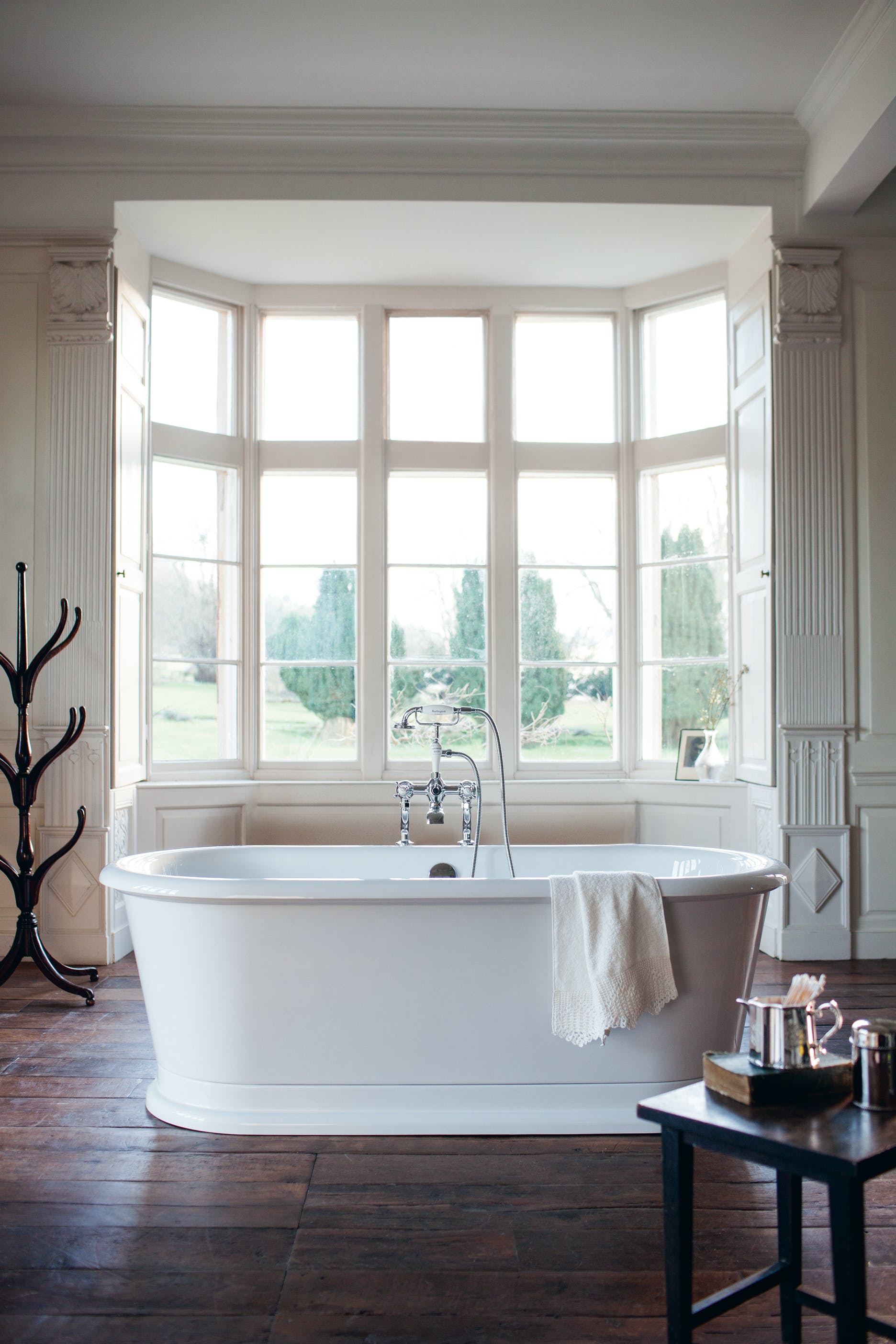
2. Quick showers
This idea now is down to changing your habits. Those who enjoy a long shower, we’re sorry, but to avoid a condensation in your bathroom means that we’ll have to cut down on your showering time.
Taking shorter showers can stop the build-up of condensation. Firstly, there’ll be less water vapour, and as you know the more vapour there are results in moisture in the air that leads to the droplets on the wall. Shorter showers diminish this.
Just like the idea we mentioned of ‘opening your windows’, this could also help in the reduction of your energy bills and benefit the environment with the amount of water we save.
.jpg?auto=compress%2Cformat&cs=strip&ixlib=php-1.1.0&s=45a52a51f566234438727324a9f8399f)
3. Use a towel warmer
The installation of towel warmers, known to others as bath radiators, is popular in bathrooms with 90% of homes in the UK coming with built towel radiators.
Their popularity is unspoken. Design-wise they’re aesthetically appealing, not to mention how energy-efficient they are.
However, we’re concentrating on how they reduce bathroom condensation which they assist in the evaporation of moisture from typical towels and other materials that you put on them.
Expanding on that, towel warmers dry the towels quickly which then prevents moisture build-up and helps to lower the humidity levels in the bathroom/shower space.
.jpg?auto=compress%2Cformat&cs=strip&ixlib=php-1.1.0&s=f0e6a6e74254a2fedabb3b1950c20f31)
4. Insulate walls
There are numerous ways in which having insulated bathroom walls can stop condensation from happening within the bathroom.
Insulated walls maintain a stable indoor temperature within the bathroom, stopping fluctuations of the temperature from happening, and preventing condensation.
Minimal heat is lost with insulated walls. they prevent the heat from leaving the room, as they provide a thermal barrier between the outside and the inside of the building. So how this helps to stop condensation in the bathroom is that it reduces the cooling effect on the surfaces.
The insulation is most useful during the colder months of the year when the temperature difference between the outdoors and indoors is huge in difference.
It could be part of your thinking to have better insulation as part of your bathroom renovations and you could be unsure whether you need it or not.
We have a team of experts who can advise regarding insulating walls as part of our full-service.
5. Wipe down surface
Simple but effective. This is one of our most recommended tips, and it is one that you can include as part of your daily routine as of today.
Give your surfaces a good wipe after finishing your bathing or showering routine. This includes areas like the corner of your window, ceiling, and baths, which are usually susceptible to mould.
So, when we mention wiping, it is very simple this includes taking a towel and wiping down the surfaces, this in turn eliminates excess water, reducing the overall bathroom humidity.
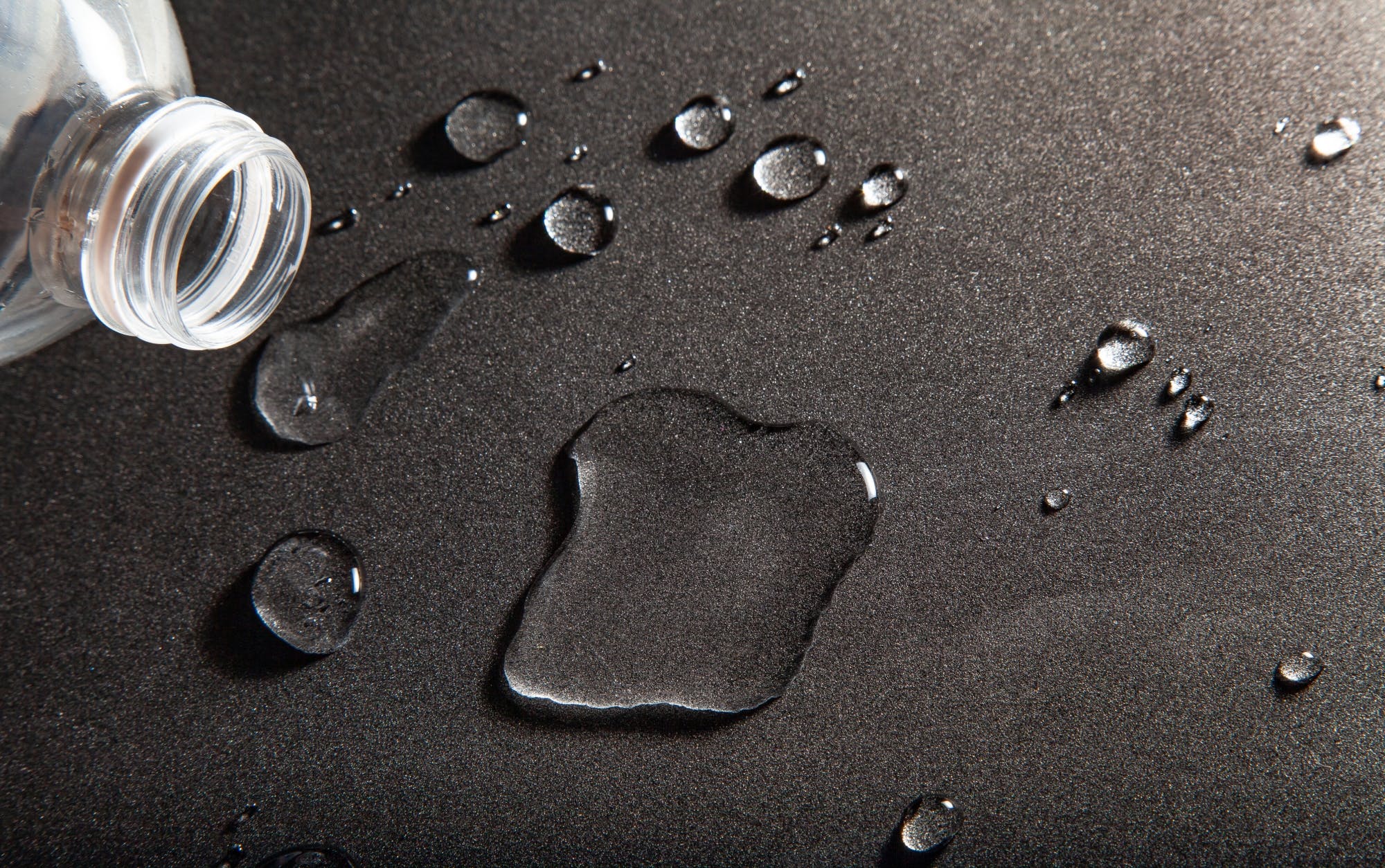
6. Circulate air
Installation of a ceiling fan, like an extraction fan in a bathroom, rotates the blades when it is turned on and creates a breeze that circulates in the air. The disperse of moist air stops the water setting on the surfaces, preventing condensation.
The circulation of the air also helps to push the damp air toward the bathroom's exhaust vents, facilitating the removal outside.
7. Regular maintenance
Another idea that helps to start the prevention of condensation build-up in the bathroom is to regularly inspect the bathroom.
Check that your bathroom fixtures such as your faucets and pipes as well as the shower are in proper working order and ensure that they’re not leaking. Any leaks of these features can cause moisture build-up ultimately leading to condensation.
Another feature in the bathroom to monitor is the cleansing of ventilation systems that you have installed in the bathroom. Over time, there could be a build-up that could have been caught in the system, removing that helps to have a fully functioning system and keeps the humidity level optimal.
If you’re unclear about your bathroom features, you could have a professional tradesman who will come out and look at them for you.
If we have carried out the bathroom project our guarantee ensures that we will fix any bathroom fixtures in the bathroom if any leaks or fixtures are not functioning to their proper capacity.
8. Dehumidifier
For bathrooms without an exhaust fan, a great alternative is a bathroom humidifier.
These are great moist absorbers.
Whilst you’re taking a shower, you can switch it on and start to allow for the process to begin by getting rid of the additional moisture that may gather in bathing activities.
The additional benefit of a dehumidifier is that by controlling the humidity levels in the bathroom you’re effectively preventing any structural damage from happening, by reducing the moisture..jpg?auto=compress%2Cformat&cs=strip&ixlib=php-1.1.0&s=d1627da8dc492f9a5ba8b8d12dd9f7f5)
9. Double-pane windows
Also known as double-glazed windows, they are energy-efficient windows. Over 87% of homes are now fully implemented with double-glazed windows.
They’re designed with two glass panels to make an air gap in the middle, finished off with sealed strips to create the window, reducing to the point of blocking air that enters a room.
These windows are designed well and they can reduce the occurrence of cold spots that can occur in a usually with a single-glazed bathroom.
What is great about double-glazed windows is that the smallest amounts of moisture can also be transferred through to the bathroom avoiding a condensation build-up happening in the bathroom space. The outside windows act like a barrier, preventing the transfer of air to the inside.
10. Waterproof grout and sealant
You could have a tiled design for your floor and maybe the walls, ensure that the grout lines are properly sealed, prevent water from getting into the tiles, walls, and floors, and minimise water absorption and moisture buildup.
Microorganisms thrive in damp environments, with grout lines that are not properly sealed then you are susceptible to mould growth happening in between these lines.
Ensuring that these lines are sealed and moisture resistant inhibits mould growth and makes the bathroom drier, and a healthier environment.
You’ll also come to realise that it is much easier to clean and maintain with the surfaces airtight, making your bathroom less prone to the accumulation of grime, soap, and other residues that may occur.
That concludes our list of 10 ideas to prevent bathroom condensation. Some of these ideas are simple and cheap to implement as of today. Others are a slight change in your daily habits.
You should also consider the health benefits alongside being beneficial to the environment that some of these ideas and habits could have.
Ready to create a mould-free bathroom?
Our experienced team of designers can help you when it comes to designing a bathroom that will have measures in place to reduce and avoid bathroom condensation.
You can either book a free design appointment / call us for a member of our team to provide you with further information.
FAQs
1. What is the ideal humidity level for a bathroom, and how can I measure it?
Regular monitoring of the humidity level is key for the prevention of bathroom condensation.
Having a humidistat calculates the moisture in the air and adjusts the air to maintain a specific humidity level, and the recommended humidity level is between 40-60%
You can sometimes notice it off the eye, typically on the mirrors, windows, and surfaces being a good indicator, that the humidity levels are high.
2. Are there any natural remedies for reducing condensation in the bathroom, such as using plants or essential oils?
Plants and essential oils are not the most effective ways to remove condensation. Plants like Aloe Vera and Orchid Lillies can absorb the moisture and improve the air quality.
3. Can I retrofit an existing bathroom to improve ventilation and reduce condensation, or do I need to consider a full renovation?
You fit simple and effective, bathroom ventilations systems to your existing bathroom that can help avoid bathroom condensation. These include upgrading your window to a double-glazed, or an installation of an exhaust fan
Share this Post




.jpg?auto=compress%2Cformat&cs=strip&ixlib=php-1.1.0&s=45a52a51f566234438727324a9f8399f)
.jpg?auto=compress%2Cformat&cs=strip&ixlib=php-1.1.0&s=f0e6a6e74254a2fedabb3b1950c20f31)

.jpg?auto=compress%2Cformat&cs=strip&ixlib=php-1.1.0&s=d1627da8dc492f9a5ba8b8d12dd9f7f5)
